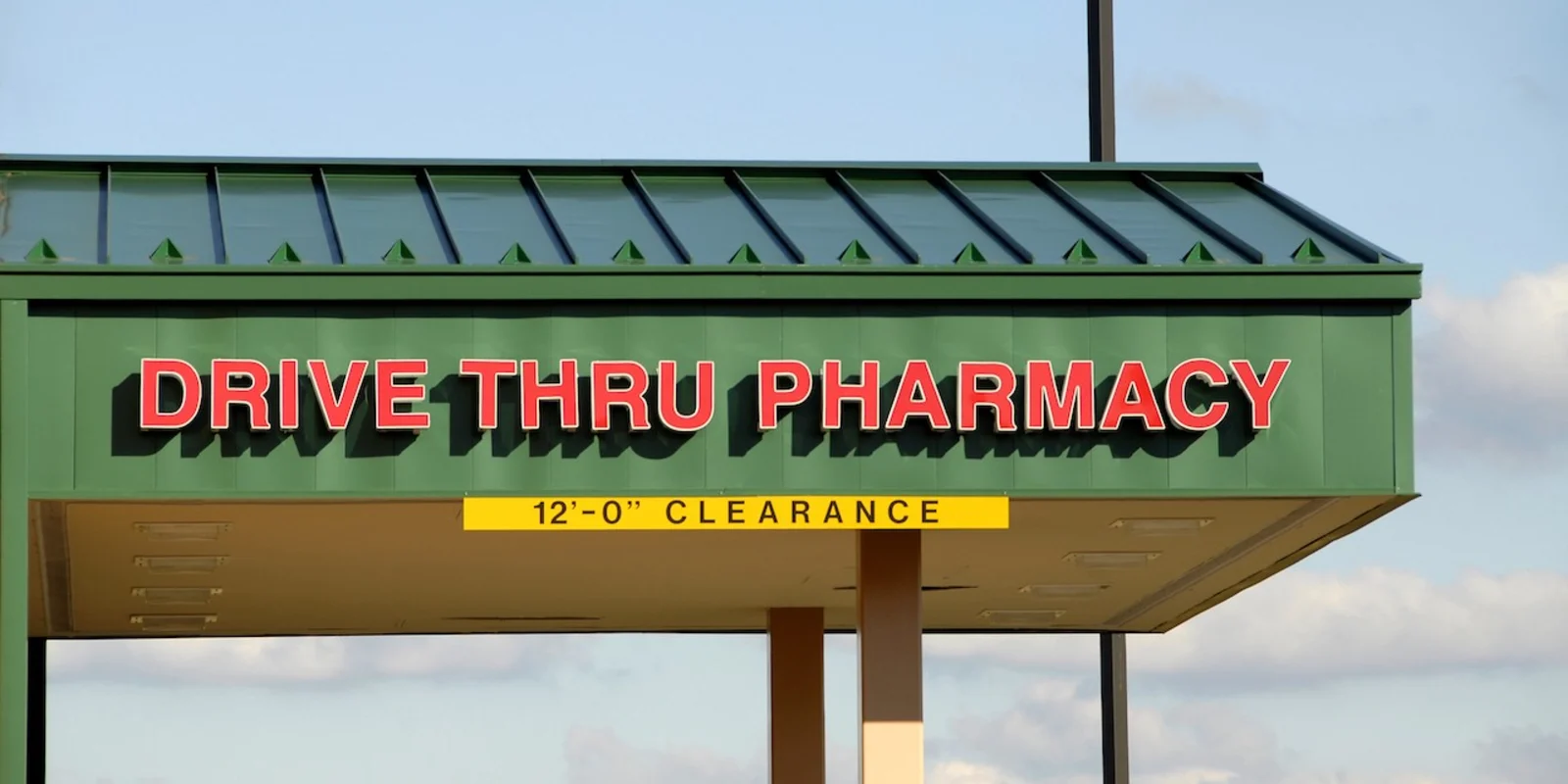
Gary Clinton doesn’t think of himself as an innovator.
He simply saw an opportunity to buy an existing space for his business venture, and he took it. The bank-turned-pharmacy building had a drive-thru window, so he incorporated the drive-thru into his pharmacy business.
That was 1971.
“Customers had to have some way to get their medication without looking for a parking space,” Clinton said in our phone interview.
The lack of dedicated parking spaces for the pharmacy made the decision a necessity rather than an innovation in Clinton’s mind. It turned out, however, that the drive-thru pharmacy was a big hit with many of his customers.
“The drive-thru saves people time and effort,” said Clinton. “Some people don’t want to get out of their cars, or they can’t get out very easily. This helps mothers with children, too.”
Twenty years later, in 1991, Walgreens opened its first drive-thru pharmacy, and then other companies followed suit as well.
Today, the perception of the drive-thru pharmacy varies, with one universal rule: customers tend to love it more than pharmacists do.
Why the Hate?
Pharmacists universally push back against the idea of treating medication like fast-food because grabbing a quick meal and picking up potentially life-sustaining medication are fundamentally different.
After spending six years or more honing their craft, pharmacists want to be perceived as health professionals, but drive-thru pharmacies complicate that perception. The focus on quick service can be seen as diminishing the importance of the patient/pharmacist relationship.
Because fast-food restaurants are optimized for efficiency, it makes little sense to treat modern drive-thru pharmacies the same way, but we do. The average visit to a fast-food window slowed to 181 seconds a few years ago, and patients often expect pharmacies to perform similarly.
Customers often prioritize efficiency over personalized service and pharmacists feel robbed of the opportunity to impact their patients’ treatment.
Perhaps more importantly, patients typically don’t want to learn about side effects while sitting in the drive-thru. (Can you even imagine a McDonald’s employee warning a customer about the negative health effects of eating too much red meat in the drive-thru?)
Ironically, pharmacists are the most accessible of all the healthcare professionals.
Because pharmacies are often open 24 hours and are located near their customers’ homes, pharmacists interact with patients more often than they do with their Primary Care providers. In the case of high-risk patients, pharmacists may see them as many as 35 times a year.
Despite the frequent contact, though, many patients don’t have relationships with their pharmacist, and they don’t often turn to the pharmacist for support.
What’s the Big Deal?
Pharmacists are notoriously overwhelmed by the increased volume of prescriptions and the inability to safely do more with less.
The competition for patients has gotten so extreme that many pharmacies offer incentives like gift cards, fuel points, and bonus coupons to customers who fill prescriptions there. As a result, many patients jockey between pharmacies and even buy unnecessary medications to accumulate fuel points.
The situation is so bad in Oregon that pharmacists are pushing back in the form of new rules that govern working conditions in pharmacies.
Pharmacists there believe that stricter rules will protect patients and compel the chain stores to become more patient-centered in their practices.
On the other hand, CVS stores in California rolled out a curbside pharmacy pickup program in 2016 which includes delivery of prescriptions as well as other front-end store products right to your car. Though the program doesn’t include prescription drugs, it could reduce opportunities for pharmacists to interact with and advise patients about medications and their interactions.
What’s Next?
The trend toward efficiency and convenience will likely continue as pharmacies compete for customers and for business.
Pharmacies are also moving toward provider-type roles, offering immunizations and other services to customers. As pharmacists move toward patient care services, pharmacy techs have shifted into dispensing roles that were previously limited to pharmacists.
The idea is that pharmacy techs can complete the technical services that don’t require the pharmacists’ professional judgment so that pharmacists are freed up to interact directly with patients.
As pharmacists take on different responsibilities and pharmacy techs absorb more of the pharmacists’ original duties, tensions may arise if pharmacists feel threatened by the increasing role of the techs.
Ultimately, too, pharmacists’ pay may continue to stay flat in the changing workplace. Change is a constant in almost every industry, and Pharmacy is no exception. It’s true, too, that change isn’t always good. (Think Furbies, fart-noise machines, and Crocs.)
In the case of the drive-thru pharmacy, it’s certainly here to stay, so we’d do well to innovate and find ways to make it as efficient as possible. It’s also likely that the line between innovation and necessity will continue to be blurred. We should probably all get comfortable with change and strive to pay it forward.
“With great power comes great responsibility.” A favorite (and overused) Spider-Man quote. Like something your mom has told you a thousand times. I love Spider-Man. He is my favorite superhero— young, intelligent, and fresh to his new responsibilities. But in your life’s story, I’m not Spider-Man. I’m your Uncle Ben. (Hopefully, I don’t die in the first act of your story.) You’re the hero. You have a mountain of a task before you: complete pharmacy school and then land your first job.
In today’s pharmacy market, that is no easy task. So, what’s my advice for pharmacy students? Two words: relationships and experience— which I’ll explain in another post.
Dr. Alex Baker is a pharmacist and the founder of TheHappyPharmD.com, which helps pharmacists create fulfilling careers. He loves anime, his family, and video games (not in that order).
A version of this article originally appeared on The Happy PharmD blog.







